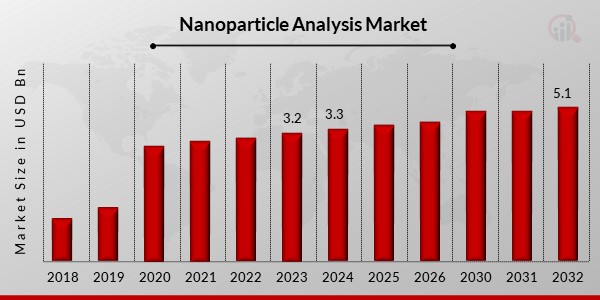Nanoparticle Analysis: Unlocking the Potential and Ensuring the Safety of the Miniscule
Pune, Maharashtra, India – April 2, 2025 – Nanoparticles, materials with at least one dimension between 1 and 100 nanometers, are at the forefront of innovation across diverse fields, from medicine and electronics to materials science and environmental remediation. Recent news highlights the critical role of nanoparticle analysis in understanding their unique properties, optimizing their applications, and ensuring their safety for both human health and the environment.

Advancements in Characterization Techniques:
The ability to accurately analyze nanoparticles – their size, shape, surface properties, composition, and behavior in various environments – is paramount. Researchers are continuously developing and refining sophisticated analytical techniques:
- Electron Microscopy (EM): Techniques like Transmission Electron Microscopy (TEM) and Scanning Electron Microscopy (SEM) provide high-resolution images of nanoparticles, revealing their 1 morphology and size distribution. Recent advancements include cryo-EM for studying nanoparticles in their near-native state and in-situ EM for observing dynamic processes.
www.reactocraft.com
- Dynamic Light Scattering (DLS): This widely used technique measures the hydrodynamic size of nanoparticles in suspension and can provide information about their stability and aggregation state.
- Nanoparticle Tracking Analysis (NTA): NTA allows for the determination of the size distribution and concentration of nanoparticles in liquid by tracking their Brownian motion under a microscope.
- Atomic Force Microscopy (AFM): AFM provides high-resolution topographical imaging of nanoparticle surfaces and can also be used to measure their mechanical properties.
- X-ray Diffraction (XRD): XRD is crucial for determining the crystalline structure and composition of nanoparticles.
- Spectroscopic Techniques (e.g., UV-Vis, Raman, XPS): These methods provide information about the optical, vibrational, and elemental composition of nanoparticles.
Applications Driving the Need for Advanced Analysis:
The burgeoning applications of nanoparticles are fueling the demand for increasingly sophisticated analysis techniques:
- Nanomedicine: In drug delivery, nanoparticle analysis is essential to characterize the size, surface charge, and drug loading efficiency of nanocarriers. This ensures targeted delivery and controlled release of therapeutic agents. For diagnostics, nanoparticle analysis helps in developing highly sensitive biosensors for early disease detection.
- Advanced Materials: Nanoparticles are used to enhance the properties of various materials, such as increasing the strength of composites, improving the conductivity of electronics, and creating novel coatings with specific functionalities. Precise analysis is needed to optimize nanoparticle synthesis and integration into these materials.
- Environmental Science: Nanoparticles are being explored for applications in water purification and pollution remediation. Characterizing their behavior and potential environmental impact requires advanced analytical tools.
- Consumer Products: Nanoparticles are found in a growing number of consumer products, including cosmetics, sunscreens, and food packaging. Ensuring their safety necessitates thorough analysis of their potential for exposure and toxicity.
Focus on Safety and Regulatory Aspects:
As the use of nanoparticles expands, concerns about their potential impact on human health and the environment are also growing. Nanoparticle analysis plays a crucial role in addressing these concerns:
- Toxicity Assessment: Analyzing the size, surface area, and chemical composition of nanoparticles is critical for understanding their potential to interact with biological systems and cause adverse effects.
- Environmental Fate and Transport: Studying how nanoparticles behave in different environmental matrices (air, water, soil) is essential for assessing their potential for accumulation and long-term impact.
- Regulatory Frameworks: Regulatory agencies worldwide are developing guidelines for the safe production, use, and disposal of nanomaterials. Accurate and reliable nanoparticle analysis is fundamental for compliance with these regulations.
Recent News and Developments in Pune and Beyond:
Researchers at local universities and institutions in Pune are actively involved in developing novel nanomaterials and studying their properties using advanced analytical techniques. Recent collaborations between academic labs and industry partners are focusing on:
- Developing nanoparticle-based drug delivery systems for targeted cancer therapy.
- Creating new antimicrobial coatings using silver and copper nanoparticles.
- Investigating the use of nanomaterials for water purification in local water sources.
Globally, there is increasing investment in infrastructure and expertise for nanoparticle analysis. Companies specializing in analytical instrumentation are launching new tools with enhanced sensitivity and throughput. Standardization efforts are underway to ensure the reliability and comparability of nanoparticle characterization data across different laboratories.
The Future of Nanoparticle Analysis:
The field of nanoparticle analysis is expected to continue to evolve rapidly, driven by the increasing complexity of nanomaterials and their applications. Future trends include:
- Development of in-situ and real-time analysis techniques: Allowing for the study of nanoparticles in their working environment.
- Integration of artificial intelligence and machine learning: For automated data analysis and prediction of nanoparticle properties and behavior.
- Standardization of protocols and reference materials: To improve the reproducibility and comparability of results across different labs.
- Development of more accessible and cost-effective analytical tools: To broaden the adoption of nanoparticle analysis in research and industry.
Nanoparticle analysis is not just a technical necessity; it is the key to unlocking the full potential of nanotechnology while ensuring its responsible and safe development for the benefit of society in Pune, Maharashtra, India, and the world.








